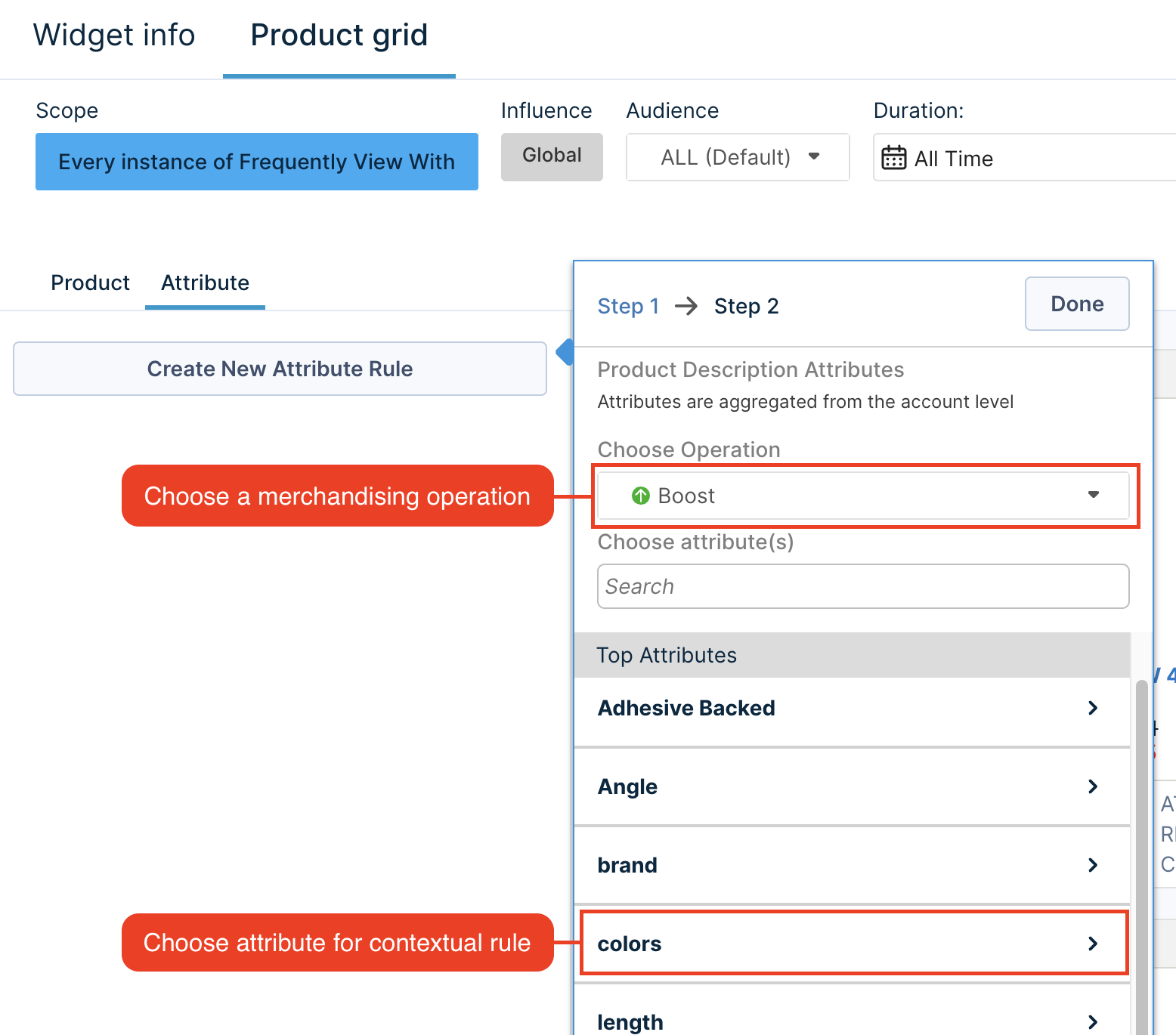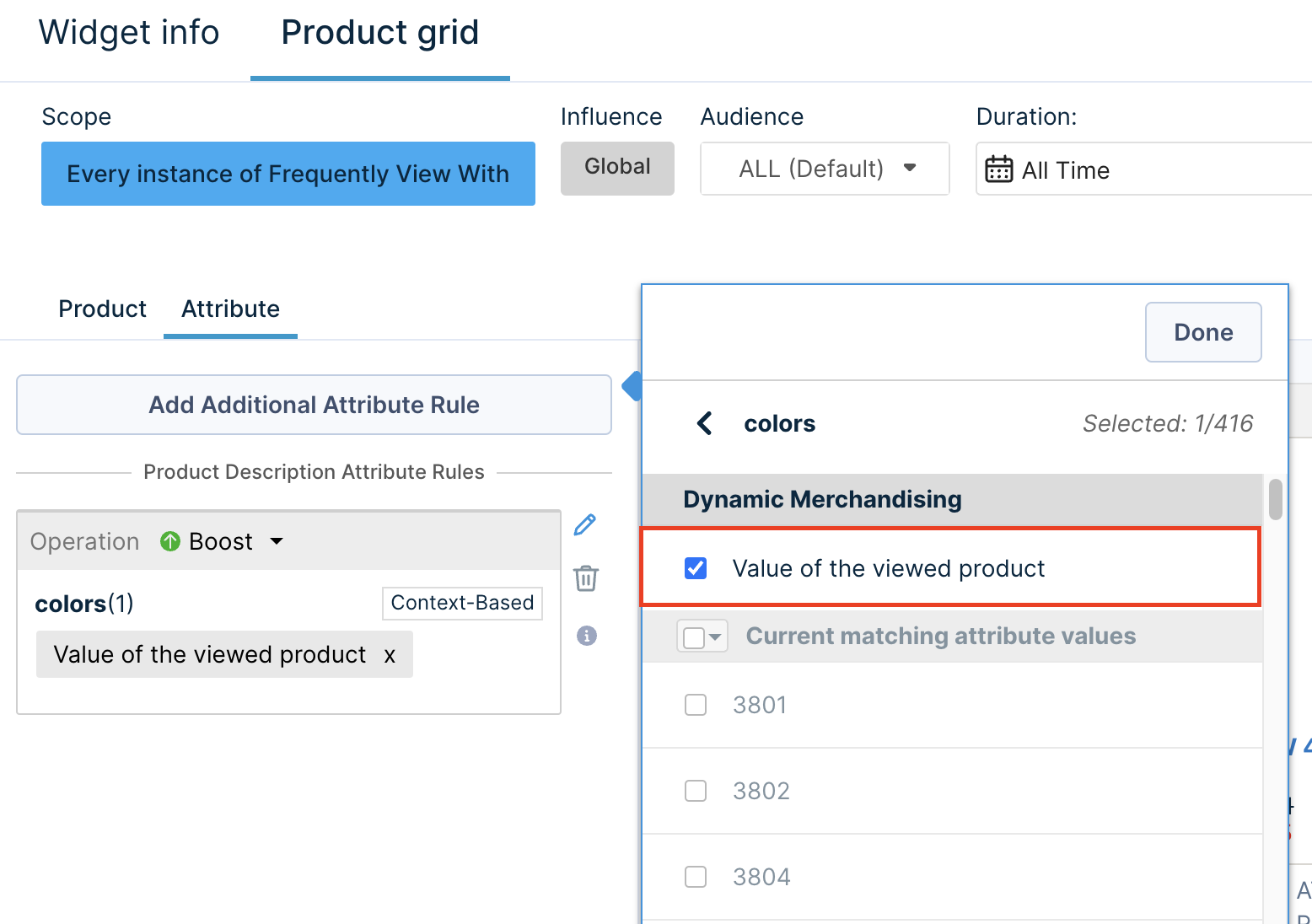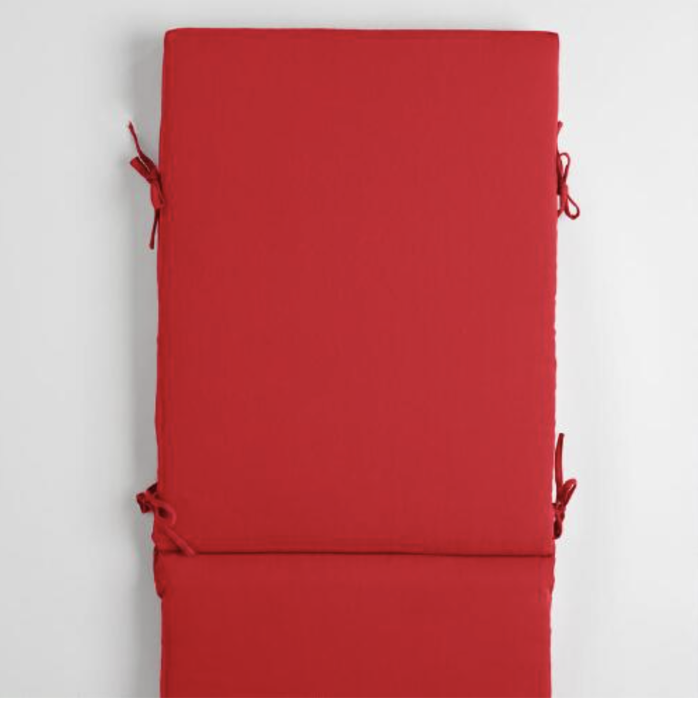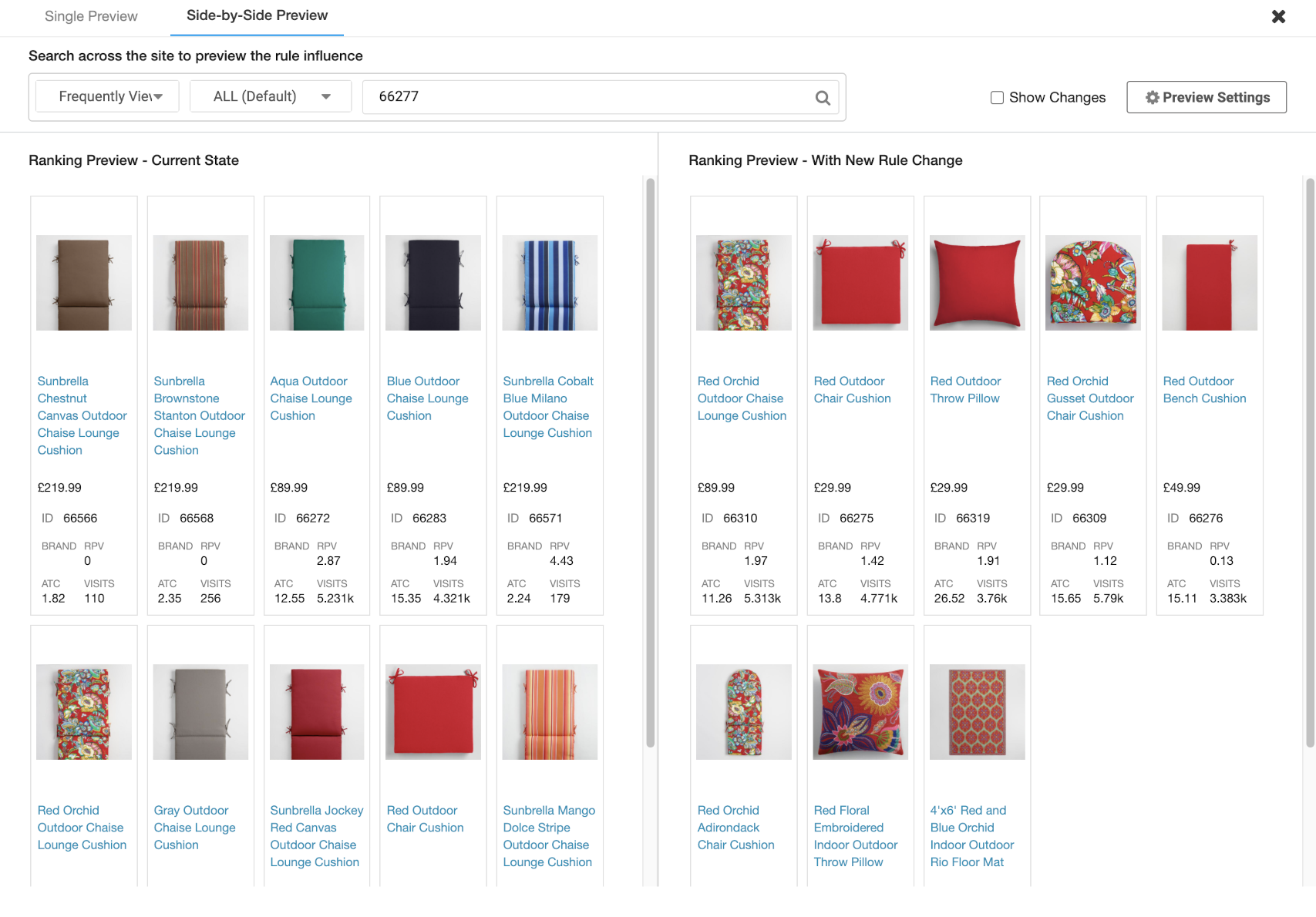Contextual Merchandising
This guide introduces you to the Contextual Merchandising feature and explores its application.
💡Prerequisites
Technical Prerequisites
- Contextual merchandising requires you to use Recommendations v2 APIs
Knowledge Prerequisites
We recommend that you review the following guides before proceeding:
- Widget Configurator: This guide walks you through the process of configuring your widgets.
- Recommendations and Pathways Merchandising: This guide walks you through the process of merchandising your widgets.
What is Contextual Merchandising
Contextual Merchandising feature generates dynamic product recommendations based on the attributes of the products your users are currently viewing.
How does Contextual Merchandising work
Contextual Merchandising identifies the attribute values of the product being viewed and displays dynamic recommendations with similar attribute values. These context-based recommendations adjust dynamically to the product description attributes on the product description page.
For instance, if your user is viewing the product page of Nike Air Max, you want to populate the Similar Products Recommendations widget with products of the same attributes. You can apply a Contextual Merchandising rule that takes reference from the attributes of the Nike Air Max product and displays recommendations with similar attributes.
Merchandising operations: You can apply the boost/bury/include only/exclude merchandising operations to your contextual attribute rules.
Supported Widgets and Algorithms
Contextual merchandising is available as an attribute filter for Product description attributes. This feature is currently supported for Item-based widgets and works on the following algorithm types:
- Similar products
- Frequently Viewed together
- Frequently Bought together
Why is Contextual Merchandising valuable for your business
- Relevant search experience: Contextual merchandising enables you to display the best set of relevant product recommendations. This creates a relevant search experience for your users.
- Quicker conversions, more revenue: As dynamic recommendations adjust to the context, users can easily find related products on your site. This improved findability leads to quicker conversions and more revenue for your business.
How to create a Contextual Merchandising rule
Note: Here, we are creating a Contextual Merchandising rule using an already existing widget. Use this guide to create a new widget and then proceed from Step 3.
Step 1
Go to Recommendations to view the Widget Configurator.
Step 2
Find the already created widget. Click the dropdown and select Widget Global rules. Then, on the Widget Global Rules page, click Edit.


Step 3
In the Product Grid, select the Attribute tab to create a new attribute rule.
Step 4
Go to Create New Attribute Rule > Product Description Attributes. Choose the desired merchandising operation and the attribute for the rule.

Select Product Description Attributes

Select a merchandising operation and the attribute
Step 5
Now, you need to choose a value for the attribute. For contextual recommendations, the attribute key-value pair looks like this:
attribute: Value of the viewed product (_This makes the attribute value dynamic)_
You can select the Value of the viewed product under Dynamic Merchandising. Click Done.
The Contextual Merchandising rule appears with a Context-Based tag

If you don’t see the option for “Value of the viewed product”, check with Bloomreach Support to ensure that you have Recommendations v2 APIs enabled.
Preview Recommendations for your Contextual Merchandising rule
In the Product Grid, click Preview to test your Contextual Merchandising rule. Enter a product ID to preview what products will be recommended contextually for that product.
Let's say you have a contextual rule that boosts products based on the "color_groups" attribute. This rule is set for the Frequently Viewed together widget. Suppose your user is viewing this Red Lounge Cushion shown below. You can preview the Recommendations that your users see when they view this Red Lounge Cushion.

With the contextual rule, red cushions are ranked higher since they are part of the same color group as the product being viewed. Without the contextual rule, the other red cushions are not ranked highly in the Recommendations.

Red cushions are ranked higher in the contextual rule.
Points to Remember
- Numeric Attributes are not supported for Contextual Merchandising.
- Attribute rules cannot use "Value of the viewed product" at the same time as other attribute values.
- We recommend not adding compound "AND" operations when creating Contextual Merchandising rules. Add the rules individually to ensure relevant recommendations.
Conflict Resolution
In case of conflicts, the same conflict resolution rules for Search & Merchandising rules also apply for Contextual Merchandising. If there are multiple products (that is, multiple product IDs) on the page such that multiple attribute values are passed, then the Contextual Merchandising rule will apply to all values.
API Reference
Contextual merchandising requires you to use Recommendations v2 APIs. Please refer to this guide for understanding the API parameters needed for Contextual Merchandising
Updated 11 months ago
